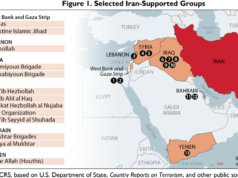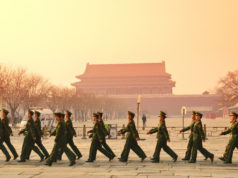Pakistani military officials confirmed on Wednesday the successful launch of the Hatf IV Shaheen-1A, Pakistan’s upgraded ballistic missile capable of carrying a nuclear weapon. The enhanced intermediate-range missile reportedly has a superior reach compared to its predecessor, the Shaheen-1, which is capable of flying 750 kilometers (approximately 465 miles). While the Shaheen-1A’s range has not been disclosed, missiles classified as intermediate-range characteristically have the power to reach targets up to 3,000 kilometers (1,850 miles) away.
Lieutenant General Khalid Ahmed, overseer of Pakistan’s nuclear program and witness to the missile’s Indian Ocean launch, explained Islamabad’s weapons advancement as a method to “further consolidate and strengthen Pakistan’s deterrence abilities”. However, the test was likely sparked by India’s successful launch last week of its Agni-V — New Delhi’s nuclear-capable long-range missile with a 5,000 kilometer traveling power that trumps the 2,000-kilometer capability of Pakistan’s longest range missile, the Shaheen II.

India premiers its nuclear-capable long-range missile, Agni-V, in a successful test launch last Thursday. (Photo: AP) |
The launch of Agni-V was not meant for Pakistan, however — despite the Pakistani-Indian rivalry rooted in contention over the rightful claim to Kashmir, three wars between the two, and Islamabad’s large arsenal of nuclear warheads and design of the Shaheen missile intended for nuclear and conventional strikes against targets in India.
Instead, the test was conducted with India’s eyes towards the East in what signifies the latest escalation of an arms race in Asia that has North Korea boasting of its ability to destroy the U.S. military in a single blow. With the means to reach Beijing and Shanghai, the Agni-V grants India the unique ability to counter China’s growing regional dominance and rising military power. Dubbed the “China Killer” by India’s media despite New Delhi’s ‘no first use’ policy, which renders the Agni-V a deterrent, the missile has Washington calling for “restraint” among the nuclear powers. China, for its part, insists India is an economically thriving partner, not a rival.
With China working to build an army as robust as its economy and the Asia-Pacific states assembling an advanced weapons arsenal at a rate unparalleled in post-Cold War history — India’s latest nuclear-capable missile advancements are cultivating the conditions necessary for a “security dilemma” panic that could exacerbate Asia’s budding nuclear arms race.





